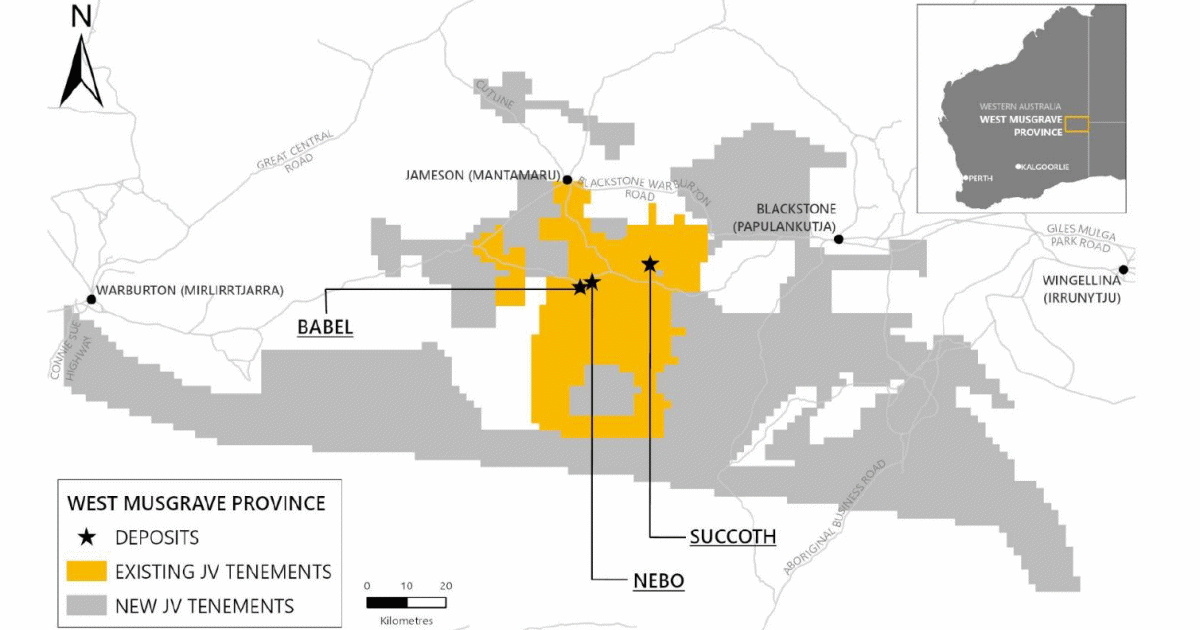
Image: Oz Minerals
OZ Minerals says renewable energy could help power its proposed West Musgrave copper and nickel project in Western Australia.
The project, a joint venture between OZ Minerals (70%) and Cassini (30%), is located in the Musgrave Province of Western Australia and includes the Nebo-Babel nickel-copper and Succoth copper deposit. The project area is 500 km west of Uluru, near where the borders between Western Australia, South Australia and Northern Territory intersect.
A pre-feasibility study for the project has been completed and was released yesterday. OZ Minerals CEO Andrew Cole says the study shows West Mulgrave can be a low carbon, low cost and long-life project producing minerals in demand by the renewable and electrification industries.
As well as supplying materials for the renewable energy industry, renewables may also help power it.
A 50MW base case power supply has been proposed, which would utliise a hybrid solar-wind-battery-diesel solution as the first choice, with a gas pipeline being plan B.
Data gathered since 2018 shows consistent solar and wind resources available at the site, with higher wind velocities at night offsetting the lack of solar energy resources outside of daylight hours. Oz Minerals says modelling has indicated somewhere in the region of 70 – 80% renewables could be achieved for the site.
“Should the renewables option be implemented, this innovative power supply solution would make West Musgrave one of the largest fully off-grid, renewable powered mines in the world,” states the study. “The solution would result in the avoidance of in excess of 220,000tpa of carbon dioxide emission compared to a fully diesel-powered operation.”
Oz Minerals envisions renewables-based electricity supply would occur under a Power Purchase Agreement (PPA), hence no capital outlay in implementing such a solution.
The pre-feasibility study report can be viewed here.
Oz Minerals And Renewables
In June last year Oz Minerals announced it would be implementing a trial installation of a ~250 kW hybrid energy solution consisting of solar, wind and battery storage connected to existing diesel generators for its Carrapateena project in South Australia. The project is part of a collaboration with six other organisations – Adelaide University, CSIRO, the Department of Energy and Mining, the Rocky Mountain Institute, SunSHIFT and the Tonsley Innovation Precinct under the banner of the Energy and Mining Collaboration (EMC).
In 2018, Oz Minerals signed an agreement with the USA’s SolarReserve, which was to develop a 150MW solar thermal + molten salt storage project near Port Augusta in SA. However, the Aurora project is dead in the water.
At the time, the company was also looking into installing solar and storage capabilities at its Prominent Hill project in northern South Australia.

 RSS - Posts
RSS - Posts



Speak Your Mind